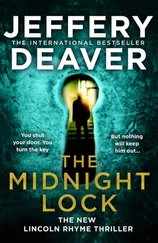A five-million-dollar potential loss is a good motivator, Rhyme supposed.
“Let him in,” he instructed Thom.
A moment later the aide directed the man into the parlor. He nodded greetings and blinked in double take as he examined the forensic equipment. “My,” he said under his breath.
The name was Edward Ackroyd. He was senior claims examiner with Milbank Assurance, on Broad Street, which was in lower Manhattan.
The man exuded medium. Average height, average weight, average amount of neatly trimmed, toffee-colored hair. Even his eyes were hazel, a shade that managed to be both unusual and undistinguished. Appropriately, he was somewhere in the middle of middle age.
“What an abject tragedy this is,” the man said in an accent that might trip from the tongue of a BBC announcer, Rhyme imagined. “Jatin Patel... murdered. And that couple too. Their whole future ahead of them. Destroyed.”
At least Ackroyd’s first reaction was loss of life, rather than of the gems.
Thom took Ackroyd’s beige overcoat. The man wore a gray suit, with a vest, rare in the United States nowadays. His shirt was starched, and his tie appeared to be as well, though that had to be Rhyme’s imagination. Given the nice garb, and the hour, maybe he’d been interrupted at a fancy dinner or a night at the theater. He wore a wedding ring.
Introductions were made. He gave only a minor reaction to Rhyme’s condition — he was more surprised by the full-sized gas chromatograph/mass spectrometer in the corner — and when Rhyme offered his working hand, the right, Ackroyd gripped it, though carefully.
“Have a seat?” Sachs offered.
“No, thank you, Detective. I can’t stay long. Just wanted to introduce myself.” He looked around. “I was expecting... I suppose, a police station.”
Sellitto said, “We run some investigations out of here. Lincoln was head of Crime Scene, now he’s a consultant.”
“Rather like our own Sherlock Holmes.”
Rhyme gave a weary half smile. He’d heard the simile, oh, about five hundred times.
“I was Metropolitan Police — Scotland Yard — before going private.” Eyes on the equipment once again. “Quite the setup. And in a private residence.” He strode to the gas chromatograph and looked at it with admiration.
Rhyme said, “Took a few years to put together. We can do the basics here. Anything more sophisticated, we send the job out.”
“Basics can be all you need sometimes,” Ackroyd said. “Too many facts, too many clues. Woods-for-the-trees sort of thing, isn’t it?”
Rhyme nodded. He felt a hint of camaraderie with the insurance man. Former cop, who’d become somewhat like him, a private investigator.
No, a consulting detective.
As Sherlock Holmes described himself.
Sellitto asked, “Did you know him? Patel? Or anyone who worked for him?”
“No, but, of course, I knew of him. Everyone involved in the diamond industry in any way did. Jatin Patel was a diamantaire — you know the term?”
“No.”
“It means anyone in the stratosphere of the diamond production or cutting world. In his case, it means a master diamond cutter. Most diamond processing now occurs in India, some in Antwerp, some in Israel. New York used to be one of the centers. It’s much smaller now but the remaining diamantaires here are the best of the best. And Patel was at the top of his game.”
Sachs asked, “What made him so good?”
“To explain that I should tell you something about the business.”
“Why not?” Sellitto said.
“To turn a rough diamond into a finished piece, there are five stages. Plotting — examining the rough stone to see how to maximize size, quality and profit. The second skill is cleaving — cracking a diamond along its grain with a sharp blow. Cutters will sometimes study a diamond for months before striking the stone. One mishap — and you could lose a million dollars in a tenth of a second.”
“But,” Sellitto interrupted, “I thought diamonds were unbreakable.”
Ackroyd shook his head. “Actually that’s a misunderstanding, Detective. Diamonds are the hardest natural substance on earth, yes, but ‘hard’ means resistant to scratching . In reality they’re extremely brittle. You can shatter a diamond with a hammer blow that would have no effect on a piece of quartz. So, as I was saying: First stage, plotting. Second, cleaving. The third task is sawing — that’s using a laser or a diamond-encrusted blade to cut the stone against the grain into the desired shape. Fourth is bruting — spinning the stone on a lathe against another diamond, or sometimes using a laser, to round it. That’s to make the most popular cut: round brilliant diamonds. The last technique is grinding the geometric facets into the stone. That’s called faceting or brillianteering.”
Insurance workers, Rhyme guessed, didn’t generally exude this level of enthusiasm. But he was beginning to think the diamond industry was a bit different from others, more passionate, more obsessed.
“Now, about Jatin Patel. Nearly all diamond cutters in the world nowadays use computers for ninety percent of their work. Certainly the mass-produced stones for the lower-end consumer market — they’re all plotted, cut and polished automatically. That’s true too of many, if not most, top-end diamonds. But Mr. Patel? He did everything himself, by hand. His diamonds are the best you’ll ever find. His death is a huge loss. In terms of art, it’s as if Picasso or Renoir had been killed. Now, sir—”
“‘Lincoln’ is fine. Really.”
“Yes, Lincoln. Of course. Now, Mr. Croft has formally put my company on notice of the loss of the Grace-Cabot rough. Under the policy, if the stones are not recovered within thirty days, we will pay the insured value, nearly five million dollars. My company obviously would prefer to recover the gems within that thirty-day period. And I hope we shall. But if not and the claim is paid we would become subrogated. You are aware of that concept?”
Mel Cooper offered, “I got hit by a runaway grocery cart when I was fifteen. Major stitches and a broken ankle.” His eyes remained on the computer screen. “Insurance company paid and then they sued the grocery store. They stepped into my shoes.”
This digression grated and Rhyme glared. No one seemed to notice.
“Exactly. And I’m sorry for your trouble.” Ackroyd seemed genuinely sympathetic.
“It was a while ago.”
“Under subrogation, after we pay the claim, Milbank, my company, would continue to try to recover the stolen goods, to sell them. Reimburse ourselves with the proceeds. So, clearly you and my company have a mutual interest in finding the diamonds. And, personally...” He was now speaking with a touch of anger. “...I would like to see the thief put away forever. Diamond heists have a gentlemanly quality. Violence of any sort is very rare. It’s not playing fair. And murder? Unimaginable. So I’ll help in any way I can. I’m at your service. And to that end I’ve found one thing that may be helpful.”
A notebook appeared from his inside jacket pocket and his fingers, tipped with closely trimmed nails, flipped through it. “As soon as Mr. Croft called my boss and I was assigned the case I started making calls. A dealer who’s helped me out in the past, fellow in Amsterdam, said he had a call from a man in New York a few hours ago, offering some rough to sell. He said about fifteen carats total, which was about the Grace-Cabot weight. The dealer demurred — he wasn’t in a position to spend that much money — but he took the number anyway, possibly for the future. Here it is.”
“Mel?” Rhyme asked.
The tech jotted it down from the notebook Ackroyd displayed and made a phone call. He had a conversation with their specialist at the Computer Crimes Unit. Then Cooper was on hold for a moment. After another discussion he disconnected. “Whoever called your friend in Amsterdam used a burner phone with a New York mobile exchange that’s not active now. Could be destroyed or the batteries could be run down. They’ll keep it on the alert list if it goes live.”
Читать дальше
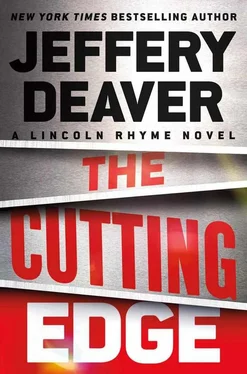
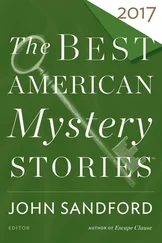
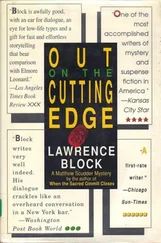
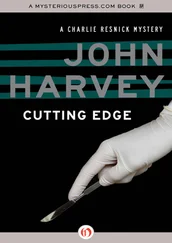
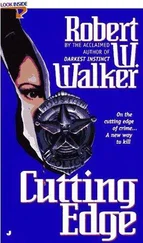
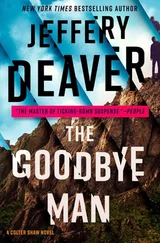
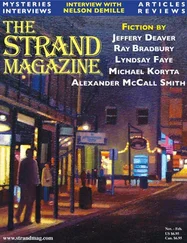
![Джеффри Дивер - Where the Evidence Lies [A Lincoln Rhyme Short Story]](/books/403782/dzheffri-diver-where-the-evidence-lies-a-lincoln-r-thumb.webp)

